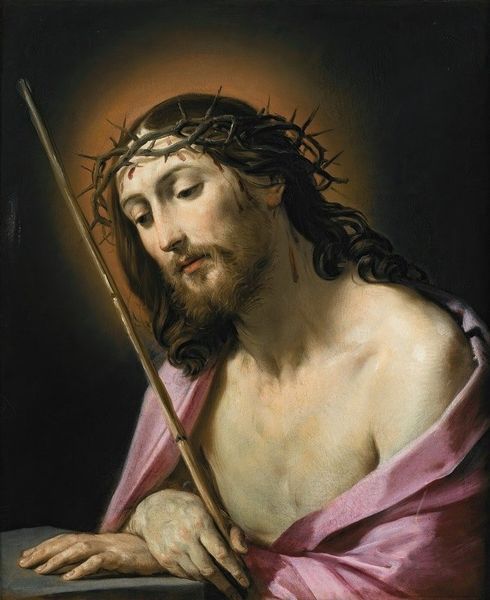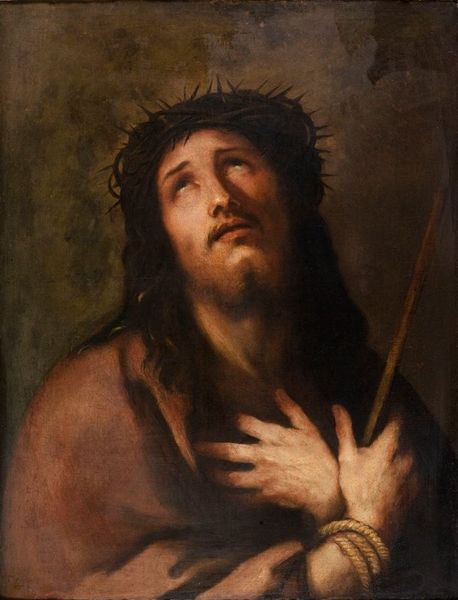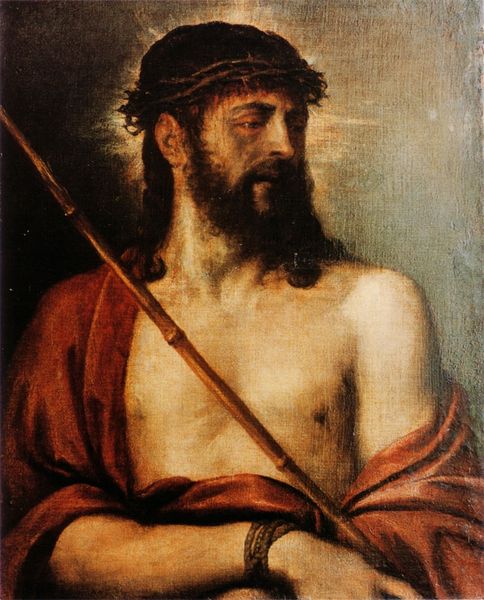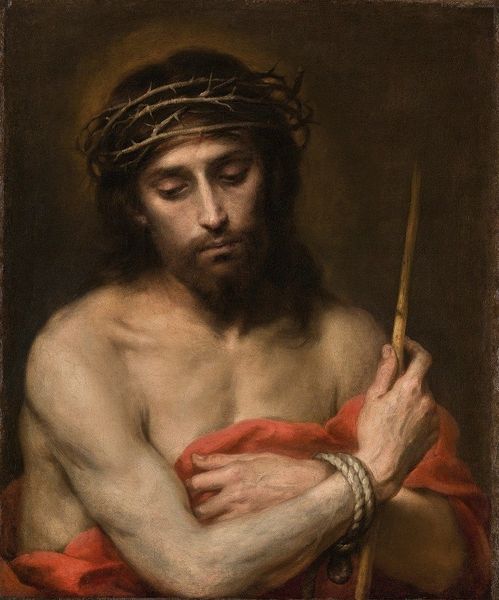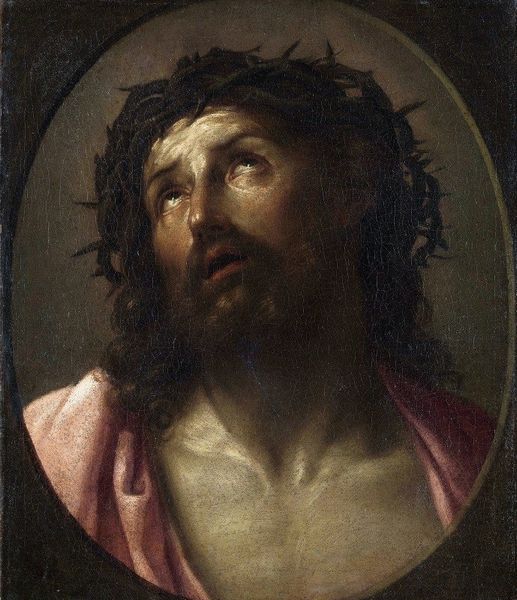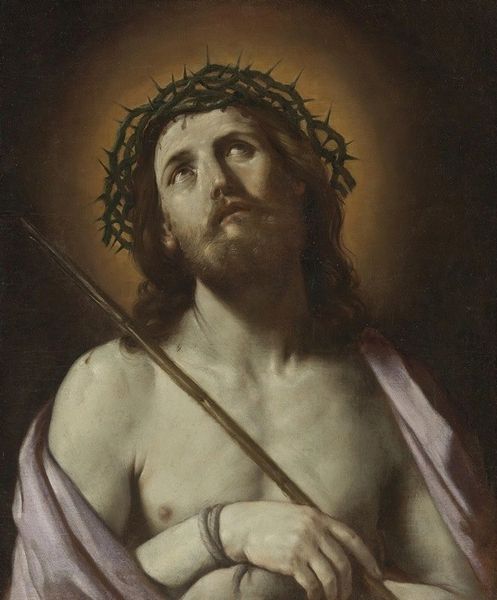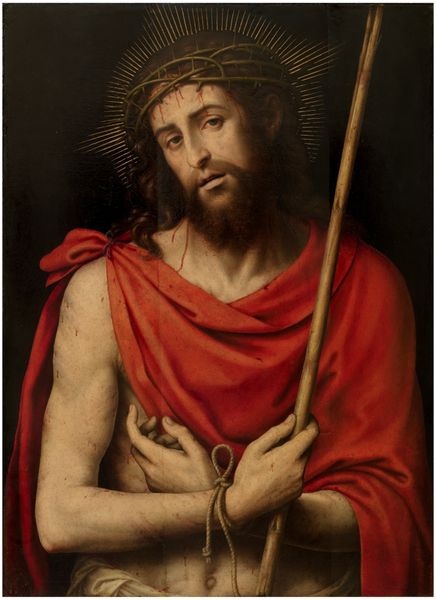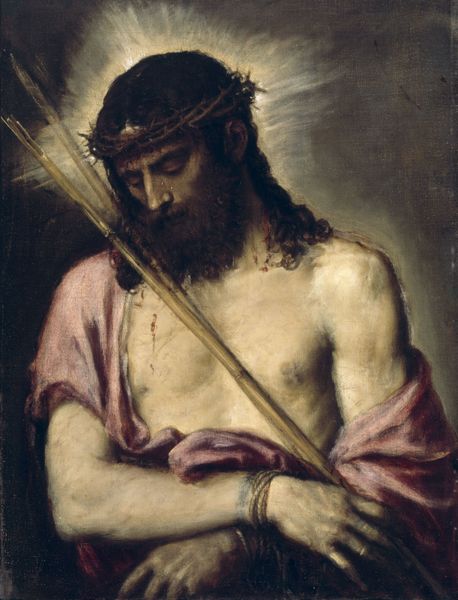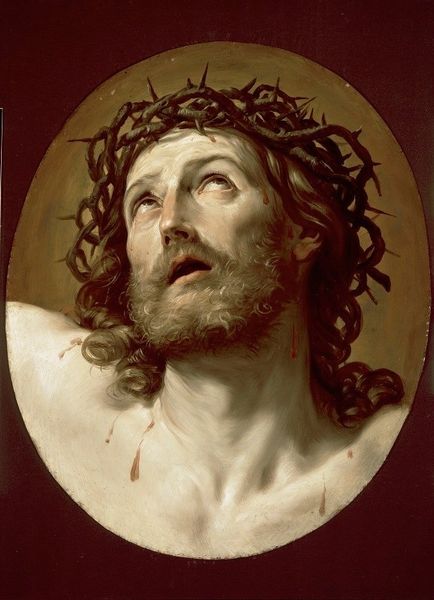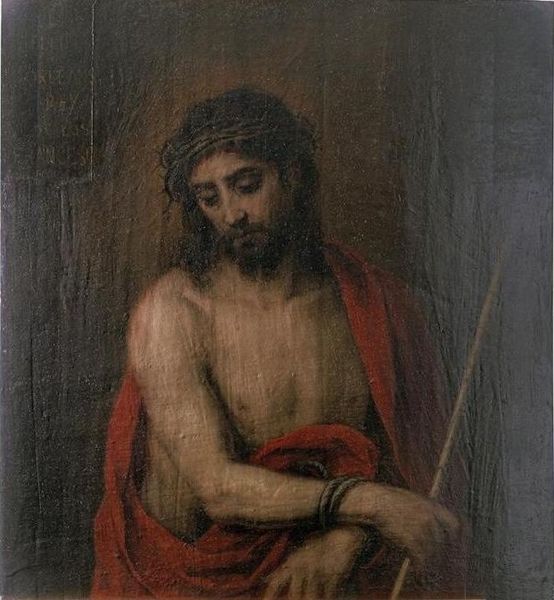
painting, oil-paint
#
portrait
#
baroque
#
portrait
#
painting
#
oil-paint
#
jesus-christ
#
history-painting
#
christ
Copyright: Public domain
Curator: This oil painting, "Christ in the Crown of Thorns," attributed to Jusepe de Ribera, presents a powerful image of religious suffering. It resides here at the Hermitage Museum. Editor: The darkness immediately strikes me; that heavy shadow and the way it makes the red of his cloak seem almost… bruised. And the texture of the skin—you can almost feel the rough weave of the canvas beneath the paint. Curator: Absolutely, the Baroque period relished in dramatic chiaroscuro. Ribera, influenced by Caravaggio, uses this to intensify the emotional impact. Think of the historical context; images like these were often commissioned to evoke empathy, and reaffirm faith in the face of hardship. Editor: The materiality, though—it speaks volumes. This wasn't just about making something beautiful. Oil paint allowed Ribera to build layers, to create that palpable sense of suffering in the textures and folds of the cloth. The crown itself looks like hastily assembled thorns. What were the working conditions in his studio? Who prepared the materials? Curator: A very valid point. Ribera was a key figure in the Neapolitan School. His work reflects not only religious sentiment but also the socio-political realities of his time—the influence of the Church, the disparities between rich and poor, and the ever-present threat of violence. The stark realism served to make the story relatable to everyday people. Editor: Relatable perhaps, but also undeniably crafted. The manipulation of light and shadow, the carefully rendered detail, the quality of the pigment – each element speaks to a conscious act of making. He may be depicting suffering, but he is also creating an object of considerable artistic labor and likely destined for consumption by the wealthy. Curator: Of course. While we must recognize the material conditions and the social context of its creation and reception, it remains a potent symbol. The intensity of the gaze and that carefully crafted lighting forces us to confront not just religious history but human suffering throughout time. Editor: Indeed. Thinking about the artistic process illuminates the power and paradox of art, its ability to be both a tool of social commentary and a carefully crafted commodity.
Comments
No comments
Be the first to comment and join the conversation on the ultimate creative platform.
